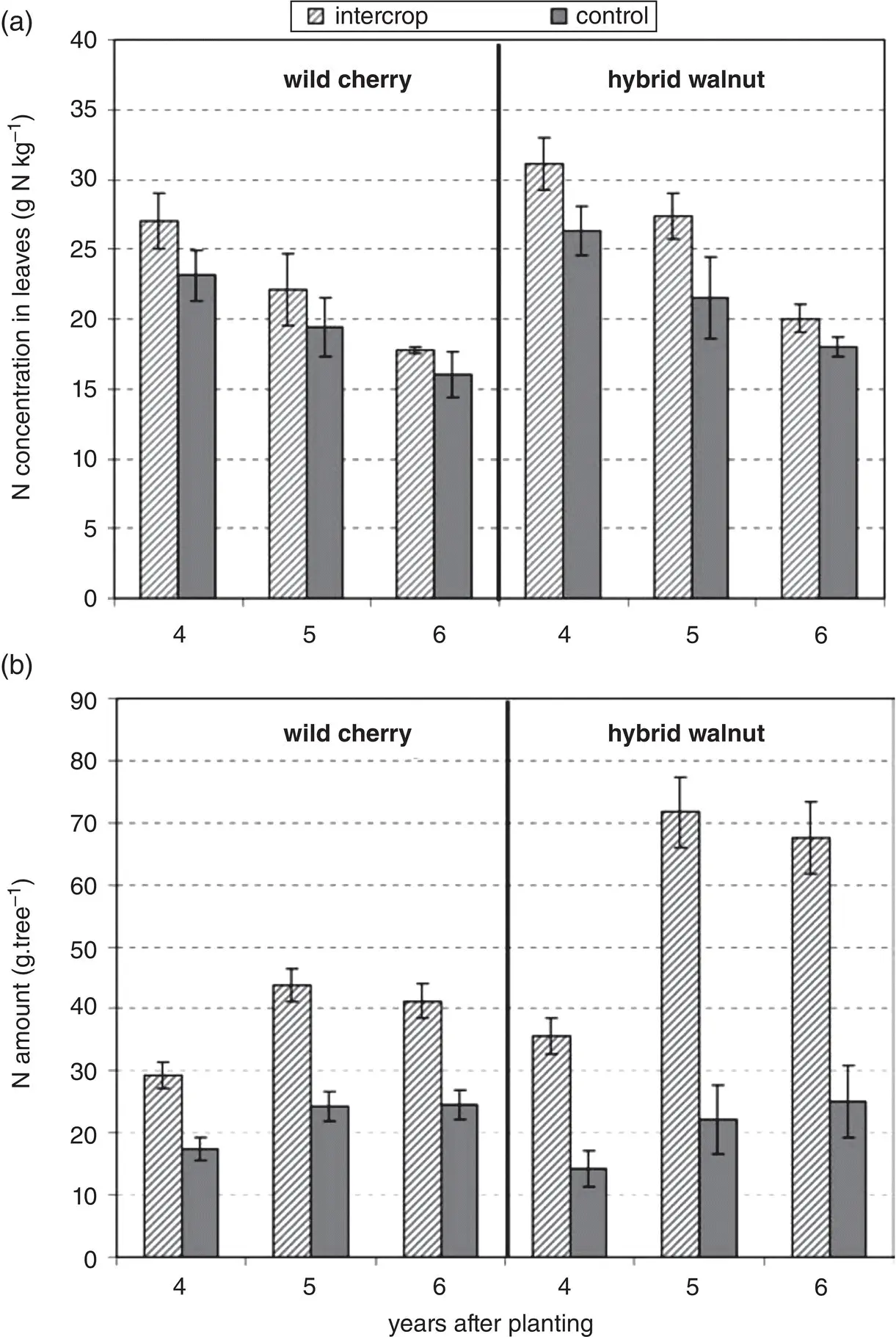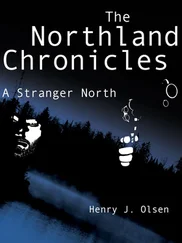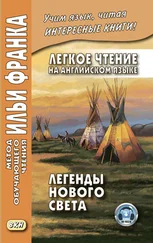North American Agroforestry
Здесь есть возможность читать онлайн «North American Agroforestry» — ознакомительный отрывок электронной книги совершенно бесплатно, а после прочтения отрывка купить полную версию. В некоторых случаях можно слушать аудио, скачать через торрент в формате fb2 и присутствует краткое содержание. Жанр: unrecognised, на английском языке. Описание произведения, (предисловие) а так же отзывы посетителей доступны на портале библиотеки ЛибКат.
- Название:North American Agroforestry
- Автор:
- Жанр:
- Год:неизвестен
- ISBN:нет данных
- Рейтинг книги:4 / 5. Голосов: 1
-
Избранное:Добавить в избранное
- Отзывы:
-
Ваша оценка:
- 80
- 1
- 2
- 3
- 4
- 5
North American Agroforestry: краткое содержание, описание и аннотация
Предлагаем к чтению аннотацию, описание, краткое содержание или предисловие (зависит от того, что написал сам автор книги «North American Agroforestry»). Если вы не нашли необходимую информацию о книге — напишите в комментариях, мы постараемся отыскать её.
Explore the many benefits of alternative land-use systems with this incisive resource North American Agroforestry
North American Agroforestry
North American Agroforestry — читать онлайн ознакомительный отрывок
Ниже представлен текст книги, разбитый по страницам. Система сохранения места последней прочитанной страницы, позволяет с удобством читать онлайн бесплатно книгу «North American Agroforestry», без необходимости каждый раз заново искать на чём Вы остановились. Поставьте закладку, и сможете в любой момент перейти на страницу, на которой закончили чтение.
Интервал:
Закладка:
Competition for nutrients
As in the case of conventional agriculture, nutrients can often be limiting in agroforestry systems. Therefore, many agroforestry systems are subject to fertilization, which is most commonly done at the level needed for the crop component to maintain high growth and productivity. Without fertilization, inter‐ and intraspecific competition for nutrients will be high and there will likely be a decrease in crop yields with time (Jose, Gillespie, Seifert, Mengel, & Pope, 2000).
Allen et al. (2004b) observed competition for N in a pecan–cotton alley‐cropping system in northwestern Florida, where cotton plants in a barrier treatment had a 59% higher aboveground biomass than plants in a non‐barrier treatment. Although a companion study indicated that competition for water was also a factor (Wanvestraut et al., 2004), the researchers hypothesized that because pecan trees leaf out earlier in the spring and have a high nutrient demand early in the growing season, the soil N was depleted before the cotton plants were established later in the growing season. Therefore, in this particular system, cotton plants are more likely to rely on fertilizer N to fulfill plant needs (Allen et al., 2004b). In addition, in a companion study, Allen et al. (2005) showed that N mineralization rates differed between barrier and non‐barrier treatments in this pecan–cotton alley‐cropping system. Higher rates of N mineralization were observed in the non‐barrier treatment (26.05 mg kg −1mo −1) than the rates observed in the barrier treatment (19.78 mg kg −1mo −1), indicating that competitive interactions for water and N in the non‐barrier treatment may have led to a decreased ability of the cotton plants to take up N (Allen et al., 2005).
Table 4–4. Comparison of height, diameter, and stem volume index of wild cherry and hybrid walnut trees 6 yr after planting for two treatments, intercropped or monoculture with weed control only (modified from Chifflot et al., 2006).
| Parameter | Species | Treatment | |
|---|---|---|---|
| Intercrop | Monoculture | ||
| Height ( H ), cm | wild cherry | 522 a | 470 b |
| hybrid walnut | 436 a | 332 b | |
| Diameter ( D ), cm | wild cherry | 9.2 a | 447.3 b |
| hybrid walnut | 47.8 a | 444.7 b | |
| Stem volume index ( D 2 H ), 10 3cm 3 | wild cherry | 447.2 a | 431.6 b |
| hybrid walnut | 431.3 a | 448.9 b |
Note . Means followed by different letters are significantly different at α = 0.05 for each row.
If water is not a limiting factor, trees also benefit from increased nutrient availability in agroforestry systems. For example, Chifflot, Bertoni, Cabanettes, and Gavaland (2006) showed that 6 yr after planting, wild cherry ( Prunus avium L.) and hybrid walnut trees ( J. nigra × J. regia ) grown in an intercropped agroforestry system with unirrigated cereal crops in France were significantly larger ( Table 4–4) and had significantly greater N content and concentration (walnut hybrid only) than trees grown in a traditional plantation with weed control ( Figure 4–8). They concluded that the trees benefited from N fertilization that was applied to the cropped alleyways.
Allelopathy
In addition to increased competition, the mixing of multiple species in a single system can potentially bring about other negative effects. One of those effects is allelopathy, which is caused by allelochemicals that are produced by some plant species and released into the soil by root exudation and aboveground litterfall. Allelochemicals have been documented to affect germination, growth, development, distribution, and reproduction of numerous plant species (Inderjit & Mallik, 2002). However, production rates of these chemicals in a given system depend on a variety of factors, including age of the species, density of the species, and the time of year. These factors, in combination with the residence time of the chemicals in the soil and plant resistance and/or tolerance to the chemicals, play a role in the degree to which these chemicals inhibit growth. It should also be noted that under certain soil conditions, such as low soil water regimes, these chemicals may be oxidized into a nontoxic form (Fisher, 1978).

Fig. 4–8. Average leaf N (a) concentrations and (b) amounts in wild cherry and hybrid walnut trees 6 yr after planting with unirrigated cereal crops (intercropping) or in traditional monoculture plantations (control). The error bars show the 95% confidence intervals of the measured means
(adapted from Chifflot et al., 2006).
There are several examples of allelopathy in temperate agroforestry systems (Geyer & Fick, 2015; Jose & Gillespie, 1998; Jose & Holzmueller, 2008; Thevathasan, Gordon, & Voroney, 1998) and most of them involve black walnut, a species that produces a phenolic compound called juglone (5‐hydroxy‐1, 4‐naphthoquinone) that restricts the growth of some other species. Although Jose, Gillespie, Seifert, and Biehle (2000) documented that competition for water was the leading factor in reduced growth of alley‐grown maize in a black walnut–maize alley‐cropping system in Indiana, a companion study (Jose & Gillespie, 1998) also indicated the possibility of juglone phytotoxicity. Jose and Holzmueller (2007) reported sensitivity of cotton ( Gossypium sp.) and peanut ( Arachis hypogaea L.) when exposed to juglone in hydroponic cultures. These are two common species with potential for alley cropping with pecan in the southern United States, and pecan also produces juglone (Jose, 2002). However, some species do not appear to be as susceptible to juglone (Geyer & Fick, 2015), and this should be taken into consideration when developing an agroforestry system.
It has also been reported that certain crop species may induce allelopathic effects on trees as well, including a decrease in development and growth (Smith, Wolf, Cheary, & Carroll, 2001; Todhunter & Beineke, 1979). In a study of containerized pecan trees, Smith et al. (2001) showed that allelochemical‐containing leachates added to the containers from bermudagrass [ Cynodon dactylon (L.) Pers.], cutleaf evening primrose ( Oenothera laciniata Hill.), and tall fescue [ Schedonorus phoenix (Scop.) Holub.] decreased pecan root weight by 17%, trunk weight by 22%, and total tree dry weight by 19% compared with the control treatment.
Management techniques to reduce the effects of allelopathy have also been examined in agroforestry systems. Jose, Gillespie, Seifert, and Biehle (2000) demonstrated that by separating the root systems of black walnut and maize using a polyethylene barrier, crop yield became similar to that of a monoculture. They further showed that the juglone concentration in the soil was negligible beyond the polyethylene barrier. Juglone concentration beyond the root barrier decreased to trace levels of 0.08 and 0.01 μg g −1soil (at distances of 2.45 and 4.25 m, respectively) in the barrier treatment compared with 0.42 and 0.32 μg g −1soil in the non‐barrier control treatment.
A comprehensive study examining field soil juglone concentrations, sorption mechanisms, juglone production rates, and degradation rates and products (Von Kiparski, Lee, & Gillespie, 2007) showed that juglone can accumulate under field conditions, with release rates from black walnut being greater than abiotic and microbial transformation rates. In a 19‐yr‐old walnut plantation, surface soil pore water juglone concentrations approached but did not exceed the inhibition solution thresholds of typical intercrops. But substantially higher levels of juglone can be reversibly sorbed by soils, and true plant impacts may be a balance of responses to multiple stress conditions in the mixed systems. From greenhouse studies, it was determined that substantial quantities of juglone can be released into the rhizosphere, and so rooting patterns of intercrops will be of particular concern when judging allelopathic potential. However, soil chemistry will play a role in these intercrops, as this study showed that microbial activity will quickly degrade juglone and decrease persistence. Soils low in microbial activity, including subsurface horizons and acidic soils that are low in organic C and fertility, can accumulate juglone, and thus this negative interaction among interplanted species should continue to be considered in walnut and pecan agroforestry systems.
Читать дальшеИнтервал:
Закладка:
Похожие книги на «North American Agroforestry»
Представляем Вашему вниманию похожие книги на «North American Agroforestry» списком для выбора. Мы отобрали схожую по названию и смыслу литературу в надежде предоставить читателям больше вариантов отыскать новые, интересные, ещё непрочитанные произведения.
Обсуждение, отзывы о книге «North American Agroforestry» и просто собственные мнения читателей. Оставьте ваши комментарии, напишите, что Вы думаете о произведении, его смысле или главных героях. Укажите что конкретно понравилось, а что нет, и почему Вы так считаете.












